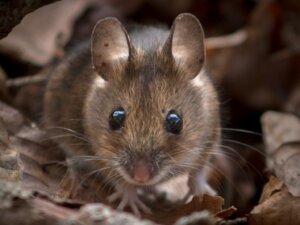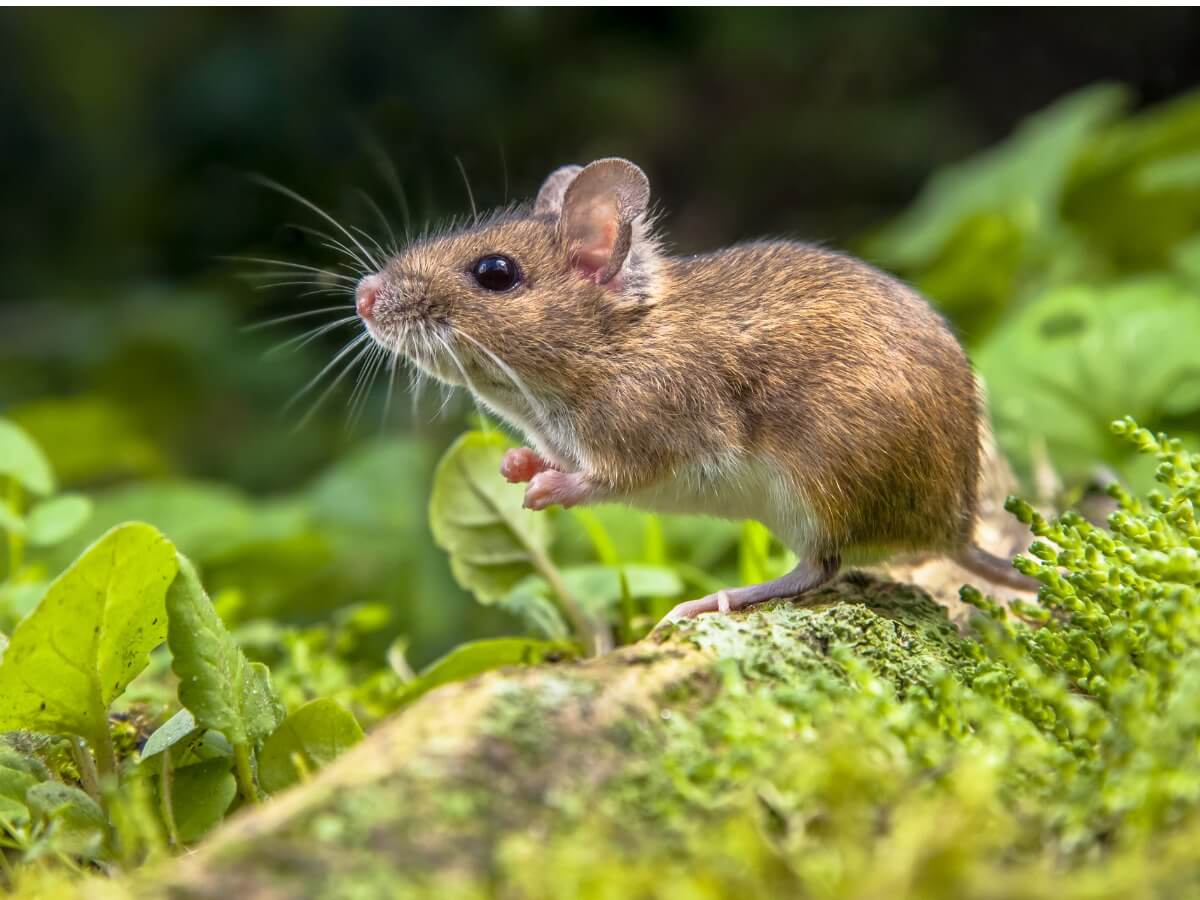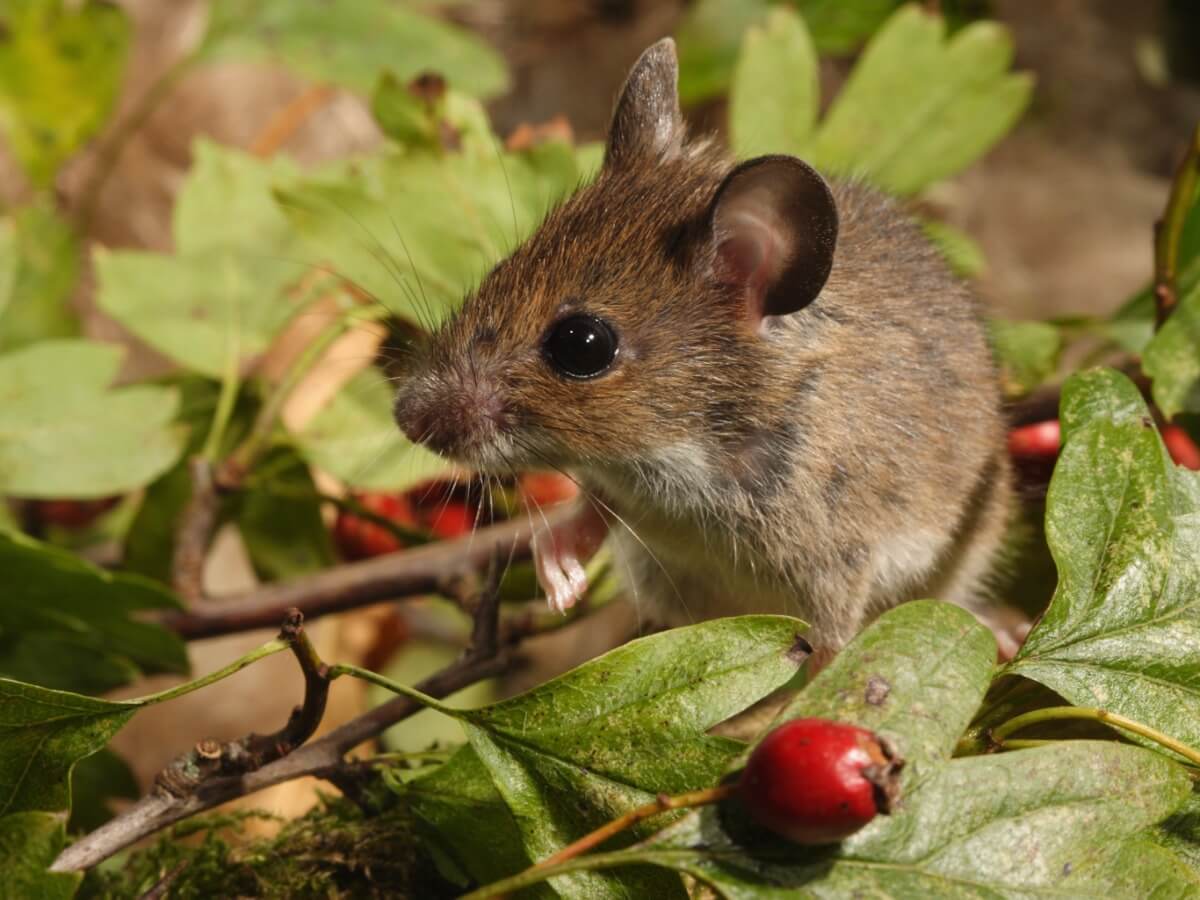How Do Extinct Rodents Help Us Understand the World We Live In?

Animals that no longer walk the Earth can provide very useful information that can help us in many different ways. Many lessons can be learned from them, especially from extinct rodents. Even after so many years, their message still endures.
That is why today we’d like to bring you some curiosities about these small mammals that are no longer with us. Through them, we can understand ancient life much better and its influence on life as we know it today. Don’t miss it!
Some curiosities about extinct rodents
Rodents, thanks to their ability to adapt and their small size, have extended throughout almost the entire globe. Because of this, it has been possible to extract very valuable data about the ecosystems of yesteryear, and we’ll bring you some of this fascinating information below.

1. The most useful part of their fossils are their teeth
Rodents explore their environment, feed, and even communicate with their mouths. Therefore, this part of their bodies usually contains information on practically everything that surrounded them, such as sediments, climatic conditions, diet and even climate.
The tooth morphology of Golunda aouraghei, for example, shows that its diet was more abrasive than that of its ancestor due to increased aridity at the end of the Pliocene period.
2. Studies of its bone configuration
The rest of its body also yields important information. Because of the great adaptability of this genus, studying their remains reveals the environments they used to inhabit. The shape of the bones and their arrangement have made it possible to find the ancestors of current rodents that move in semi-aquatic, arboreal, desert environments, etc.
3. The Lazarus effect
Although there are usually no fossils involved in this case, species have been known to re-emerge after a period of time without sightings. One of the most recent cases is that of Pseudomys glaucus, an Australian mouse whose last physical evidence dates back to 1910. Well, in 1956 one of these rodents was caught in a farm trap along with a large number of house mice.
Gould’s mouse (Pseudomys gouldii) is another famous case. It was considered extinct for over 100 years only to find out later that it had moved its home thousands of miles from its original distribution area.
4. The world’s oldest rodent
A site with rodent fossils was discovered in 2011 in the Ucayali River in Peru. The remains – mostly teeth – date back 41 million years. Moreover, their similarity to African rodents confirms that those on the other side of the Atlantic are their descendants.
The usefulness of extinct rodents for the present day
We should always look to the past and learn from it. This advice, so common when talking about human history and politics, also applies to Mother Earth. If you talk to any expert in the field, they could give you arguments regarding its importance, such as the following:
- Extinct rodents are an example of the evolution of species: Although it isn’t easy, it’s possible to gather all the links in the evolutionary chain of a species. In this way, physical and environmental changes are linked throughout the history of the planet.
- Studying the causes of extinction: Knowing what caused a species to disappear is very valuable information for today’s world. In fact, part of the task of conserving the planet’s biodiversity involves extracting this information from past times.
- A better understanding of ecosystems: Every time a species becomes extinct, the biome it inhabits is modified to a greater or lesser extent. Studying these changes after the extinction of a rodent (or any other species) is essential in order to foresee the problems of losing species with the same characteristics.
- Discovering the rodent species that inhabited the Earth: This point is the most obvious, since knowing which animals populated the planet millions of years ago has been the concern of many scientists since the dawn of humanity.
The sixth mass extinction

While news of species extinctions comes one at a time, by now you’ll have seen how important it is to be so concerned about just how many there are. In fact, the International Union for Conservation of Nature has published a report that documents 617 extinct vertebrate species, most of them in the last century.
These extinctions, artificially accelerated by mankind, have an enormous impact on ecosystems, whose imbalance inevitably leads to more extinctions. That’s why it’s said that humans will cause what’s known as the sixth mass extinction.
In fact, what really confirmed that we’re heading towards this catastrophe was to include plant and invertebrate species in the count, as they make up most of the biodiversity of this planet.
This is why, whether we’re talking about extinct rodents or any other living being, much of the progress towards saving the planet depends on this research. Let us never forget that we only have one home and we need to live together in peace to preserve it.
Animals that no longer walk the Earth can provide very useful information that can help us in many different ways. Many lessons can be learned from them, especially from extinct rodents. Even after so many years, their message still endures.
That is why today we’d like to bring you some curiosities about these small mammals that are no longer with us. Through them, we can understand ancient life much better and its influence on life as we know it today. Don’t miss it!
Some curiosities about extinct rodents
Rodents, thanks to their ability to adapt and their small size, have extended throughout almost the entire globe. Because of this, it has been possible to extract very valuable data about the ecosystems of yesteryear, and we’ll bring you some of this fascinating information below.

1. The most useful part of their fossils are their teeth
Rodents explore their environment, feed, and even communicate with their mouths. Therefore, this part of their bodies usually contains information on practically everything that surrounded them, such as sediments, climatic conditions, diet and even climate.
The tooth morphology of Golunda aouraghei, for example, shows that its diet was more abrasive than that of its ancestor due to increased aridity at the end of the Pliocene period.
2. Studies of its bone configuration
The rest of its body also yields important information. Because of the great adaptability of this genus, studying their remains reveals the environments they used to inhabit. The shape of the bones and their arrangement have made it possible to find the ancestors of current rodents that move in semi-aquatic, arboreal, desert environments, etc.
3. The Lazarus effect
Although there are usually no fossils involved in this case, species have been known to re-emerge after a period of time without sightings. One of the most recent cases is that of Pseudomys glaucus, an Australian mouse whose last physical evidence dates back to 1910. Well, in 1956 one of these rodents was caught in a farm trap along with a large number of house mice.
Gould’s mouse (Pseudomys gouldii) is another famous case. It was considered extinct for over 100 years only to find out later that it had moved its home thousands of miles from its original distribution area.
4. The world’s oldest rodent
A site with rodent fossils was discovered in 2011 in the Ucayali River in Peru. The remains – mostly teeth – date back 41 million years. Moreover, their similarity to African rodents confirms that those on the other side of the Atlantic are their descendants.
The usefulness of extinct rodents for the present day
We should always look to the past and learn from it. This advice, so common when talking about human history and politics, also applies to Mother Earth. If you talk to any expert in the field, they could give you arguments regarding its importance, such as the following:
- Extinct rodents are an example of the evolution of species: Although it isn’t easy, it’s possible to gather all the links in the evolutionary chain of a species. In this way, physical and environmental changes are linked throughout the history of the planet.
- Studying the causes of extinction: Knowing what caused a species to disappear is very valuable information for today’s world. In fact, part of the task of conserving the planet’s biodiversity involves extracting this information from past times.
- A better understanding of ecosystems: Every time a species becomes extinct, the biome it inhabits is modified to a greater or lesser extent. Studying these changes after the extinction of a rodent (or any other species) is essential in order to foresee the problems of losing species with the same characteristics.
- Discovering the rodent species that inhabited the Earth: This point is the most obvious, since knowing which animals populated the planet millions of years ago has been the concern of many scientists since the dawn of humanity.
The sixth mass extinction

While news of species extinctions comes one at a time, by now you’ll have seen how important it is to be so concerned about just how many there are. In fact, the International Union for Conservation of Nature has published a report that documents 617 extinct vertebrate species, most of them in the last century.
These extinctions, artificially accelerated by mankind, have an enormous impact on ecosystems, whose imbalance inevitably leads to more extinctions. That’s why it’s said that humans will cause what’s known as the sixth mass extinction.
In fact, what really confirmed that we’re heading towards this catastrophe was to include plant and invertebrate species in the count, as they make up most of the biodiversity of this planet.
This is why, whether we’re talking about extinct rodents or any other living being, much of the progress towards saving the planet depends on this research. Let us never forget that we only have one home and we need to live together in peace to preserve it.
All cited sources were thoroughly reviewed by our team to ensure their quality, reliability, currency, and validity. The bibliography of this article was considered reliable and of academic or scientific accuracy.
- Smith, A. P., & Quin, D. G. (1996). Patterns and causes of extinction and decline in Australian conilurine rodents. Biological conservation, 77(2-3), 243-267.
- Ceballos, G., Ehrlich, P. R., Barnosky, A. D., García, A., Pringle, R. M., & Palmer, T. M. (2015). Accelerated modern human–induced species losses: Entering the sixth mass extinction. Science advances, 1(5), e1400253.
This text is provided for informational purposes only and does not replace consultation with a professional. If in doubt, consult your specialist.








